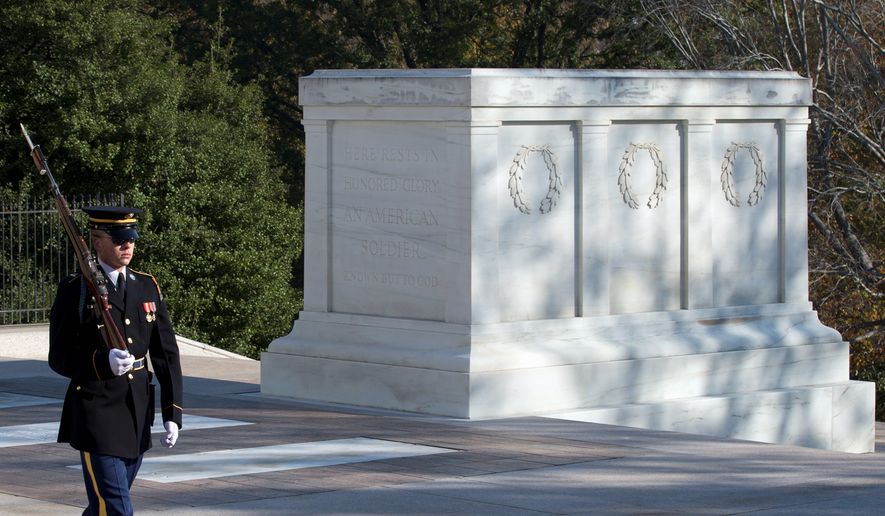No one can identify the lost lives that Arlington National Cemetery’s Tomb of the Unknowns commemorates — but now we identify some of the soldiers who helped honor the fallen nearly a century ago.
Eight servicemen from World War I took part in the first burial for an unknown soldier, carrying the casket into the marble tomb, and military author Patrick K. O’Donnell has shed light on them and the memorial to lost lives.
“The story of the tomb has hardly ever been told,” Mr. O’Donnell said Wednesday at the Heritage Foundation. “The Unknown Soldier was about closure for the Great War, but it was also about healing in the United States.”
The Heritage Foundation hosted Mr. O’Donnell to discuss his newest book, “The Unknowns: The Untold Story of America’s Unknown Soldier and WWI’s Most Decorated Heroes Who Brought Him Home.”
“His book is extraordinarily gripping and informative,” said Thomas Spoehr, director of the Heritage Foundation Center for National Defense.
Mr. O’Donnell, who has penned 11 books on war history, said his “cinematic” telling of each body bearer’s story presents a broader perspective of war and sacrifice via the lives of rank-and-file troops.
“The men that General [John J.] Pershing chose to be the body bearers were chosen to tell the story of the American expeditionary forces in World War I,” Mr. O’Donnell said. “This is not the guys that built things, this is the people that blow things up.”
“The Unknowns” includes the story of body bearer Cpl. Thomas Saunders, an American Indian who had been given a suicide mission — to clear the way for the infantry advancing behind him by snipping enemy wires in the middle of no-man’s land.
People today pay more attention to World War II than World War I, Mr. O’Donnell said.
“It’s the hundredth anniversary and hardly anybody knows about it. It’s a forgotten war,” he said.
He explained the genesis of the Unknown Soldier ceremony, which commemorates all unidentified lives lost to battle: Marie Meloney, editor of a 1920s women’s magazine, wrote a letter to the Department of War that advocated an unknown soldier’s tomb.
Mr. O’Donnell said she “literally starts a movement,” and a congressman responded — himself a former officer from a unit consisting mostly of black and Puerto Rican soldiers. Once Congress approved the tomb, Gen. Pershing chose “a grunt,” Sgt. Edward Younger, to choose the anonymous body for the Unknown’s casket, he said.
“He prayed a force he can’t explain moved his hand” toward one of four exhumed bodies, where Sgt. Younger placed white roses to indicate his choice.
For his books, Mr. O’Donnell has interviewed about 4,000 veterans and told their stories. He said that Arlington National Cemetery gives him a sense of each of those veterans’ individual lives — that each plaque across the graveyard’s fields represents a unique story.




Please read our comment policy before commenting.